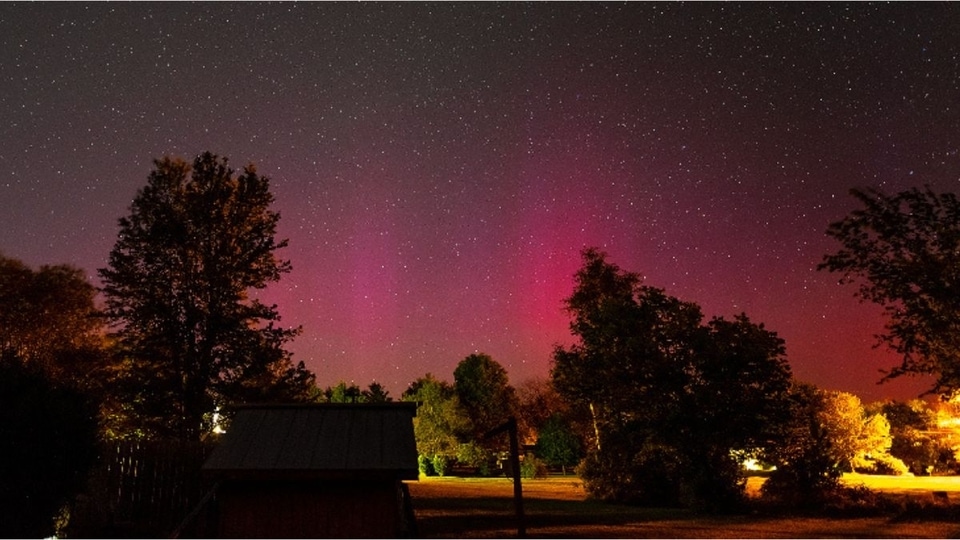Surprise G2-class Geomagnetic storm sparks stunning red auroras even in Missouri
Stunning red auroras were captured across the US caused by a G2-class Geomagnetic storm that hit Earth.

2023 has been an eventful year for astronomers and skywatchers. Not only have we witnessed several big asteroids pass by Earth at close distances, but other sky phenomena such as auroras have mesmerized us too. The planet has been continuously bombarded by solar storms since the turn of the year and not a single week has gone by without at least one incident being reported of solar particles hitting the atmosphere. Now, a geomagnetic storm surprised astronomers, and it sparked stunning red auroras which lit up the sky as far south as the US.
Geomagnetic storm strikes
On May 19, a massive crack appeared in the Earth's magnetic field. Solar wind entered the planet's atmosphere through this gap and sparked a G2-class Geomagnetic storm, according to a report by spaceweather.com. Following the impact of the storm, stunning red auroras were seen across many northern states in the US and shockingly, even as far south as Missouri.
Red auroras are rarer than green auroras because they require a higher level of energy to be produced. These auroras are produced due to the high-altitude oxygen molecules and nitrogen molecules colliding and emitting light in the red part of the spectrum.
"The night started off with a surprise passage of Starlink satellites whose 21 or so members flared to incredibly bright for a few seconds. Then the red auroras came and were visible to my camera for about an hour or so,” said photographer Dan Bush who captured the red auroras in Missouri.
How geomagnetic storm sparked auroras: The science behind
According to Spaceweather, this Geomagnetic storm was likely caused by a CME that missed Earth by a close margin last week and left South-pointing magnetic fields in its wake. “Those south-pointing fields partially cancelled Earth's north-pointing magnetic field, lowering our defenses against the solar wind,” the report said.
According to NASA, when a solar storm interacts with Earth's magnetic field, it results in the formation of geomagnetic storms. The solar particles released during this interact with the various gases present in our atmosphere and form stunning Auroras which are a sight to behold, especially from places like Reykjavik in Iceland and Svalbard in Norway.
These mesmerizing lights are constantly changing shape and intensity, from dim and scattered, to bright enough that they are visible for miles.
The tech tracking the auroras
Scientists study auroras from a variety of vantage points: below, above, and within. From below, ground-based telescopes and radar look upward to track what's happening in the sky. From above, NASA missions such as THEMIS investigate what causes auroras to dramatically shift from slowly shimmering waves of light to wildly shifting streaks of colour, according to the space agency.
Catch all the Latest Tech News, Mobile News, Laptop News, Gaming news, Wearables News , How To News, also keep up with us on Whatsapp channel,Twitter, Facebook, Google News, and Instagram. For our latest videos, subscribe to our YouTube channel.

























